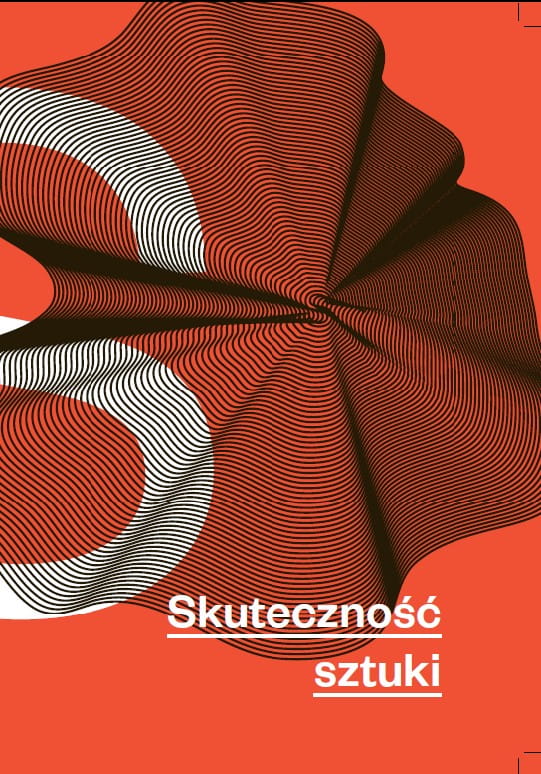Towards an Infrastructure of Humans (2019)
Filed under book | Tags: · art, employment, infrastructure, labour, precarity, work

“Humans can exist without an institution, yet no institution can function without humans. Institutions to a large degree are the people who work in them, but they are also more than just a group of individuals working together. What then does the institutional part of an institution contain? What allows a gathering of people to become more than the sum of all its parts? And in the age of neo-liberal self-exploitation, are institutions still operative in the interests of the individuals involved?”
“The texts and accounts here present the results of the international gathering called Humans of the Institution that took place in November 2017 in Amsterdam. The event aspired to confront the unspoken conditions of cultural employment and activity in a unique manner.”
Edited by Anne Szefer Karlsen with Vivian Ziherl and Steven ten Thije
Foreword by Charles Esche and Steven ten Thije
Publisher Van Abbemuseum, Eindhoven, 2019
Creative Commons BY-NC-SA License
ISBN 9789082902921
159 pages
Skuteczność sztuki (2014) [Polish]
Filed under book | Tags: · activism, art, art theory, community art, design, knowledge production, labour, participation, participatory art, politics, production, society, work

“Publikacja dotyczy jednego z najważniejszych problemów współczesnej sztuki – jej możliwej i oczekiwanej skuteczności. W obszernym tomie pod redakcją Tomasza Załuskiego, w ponad dwudziestu esejach i wywiadach temat ten zostaje przeanalizowany przez teoretyków i praktyków sztuki współczesnej. Dzięki tej wielości perspektyw publikacja jest pełną aktualnych odniesień prezentacją różnych poglądów, doświadczeń i postaw.
Pojęcie „skuteczności” jest przez autorów ujęte w krytyczny sposób i szeroko sproblematyzowane. Eseje i wywiady zostały pogrupowane wokół sześciu zagadnień: Jak sztuka odnosi się do współczesnych zjawisk ekonomicznych i rodzajów pracy oraz produkcji? Czy dizajn może kształtować zachowania i relacje społeczne? Kolejne części stawiają pytania o kwestie kolektywności, partycypacji i politycznego zaangażowania artystów, w tym o związki sztuki i miejskiego aktywizmu. Wreszcie podjęte zostają problemy dotyczącego tego, czy sztuka może być narzędziem społecznej zmiany oraz czy istnieje dziś miejsce dla sojuszu sztuki i nauki?
Publikacja jest podsumowaniem trzyletniej dyskusji prowadzonej w Muzeum Sztuki na temat zagadnienia skuteczności sztuki.”
Contributors: Edwin Bendyk, Łukasz Białkowski, Roman Dziadkiewicz, Adam Dzidowski, Joanna Erbel, Mikołaj Iwański, Aleksandra Jach, Rafał Jakubowicz, Małgorzata Ludwisiak, Ewa Majewska, Wojtek Moćko, Zbigniew Oksiuta, Adam Ostolski, Marcin Polak, Mikołaj Ratajczak, Monika Rosińska, Aneta Rostkowska, Jan Sowa, Joanna Warsza, Tomasz Załuski, Marcin Zaród, Agnieszka Ziętek.
Edited by Tadeusz Załuski
Publisher Muzeum Sztuki w Łodzi, Łódź, 2014
ISBN 9788363820190, 8363820199
579 pages
Review: Szum (2015, PL).
Comment (0)Sean Dockray: Performing Algorithms: Automation and Accident (2019)
Filed under thesis | Tags: · algorithm, art, automation, control society, generativity, governmentality, labour, lecture-performance, machine learning, neural networks
“Performing Algorithms: Automation and Accident investigates how artists might stage encounters with the algorithms driving our post-industrial, big-data-based, automatic society. Several important theories of this contemporary condition are discussed, including control societies, post-industrial societies, the automatic society, the cybernetic hypothesis, and algorithmic governmentality. These concepts are interwoven with histories of labour and automation, recent developments in machine learning and neural networks, and my own past work.
Through a series of expanded lecture performances that describe our algorithmic condition while setting it into motion, this research seeks to discover ways in which to advance new critical positions within a totalizing technical apparatus whose very design preempts it. The included creative works have been performed, exhibited, and published between 2014 and 2018. They are made available online through an artificially intelligent chatbot, a frequent figure in the research, which here extends the concerns of that research through to how the work is framed and presented.
The thesis focuses on both generative art and the lecture performance, which converge in performing algorithms but are generally not discussed in connection with one another. They emerged in parallel as artistic methods, however, at a time when management and computation were taking root in the workplace in the 1960s. Furthermore, as the Internet became widespread from the 1990s, generative art and the lecture performance each found renewed prominence.
With human language and gesture increasingly modelling itself on the language of computation and work constantly reshaped by the innovations of capital, this project identifies “not working” both in terms of the technological breakdown and also as a condition of labour under automation. A discussion of the first fatal accident involving a self-driving vehicle illustrates this dual condition. Shifting from glitch art’s preoccupation with provoking errors to a consideration of not working, this research proposes artistic strategies that learn to occupy rather than display the accident.”
PhD dissertation
Publisher Faculty of the Victorian College of the Arts and Melbourne Conservatorium of Music, The University of Melbourne, 2019
146 pages

